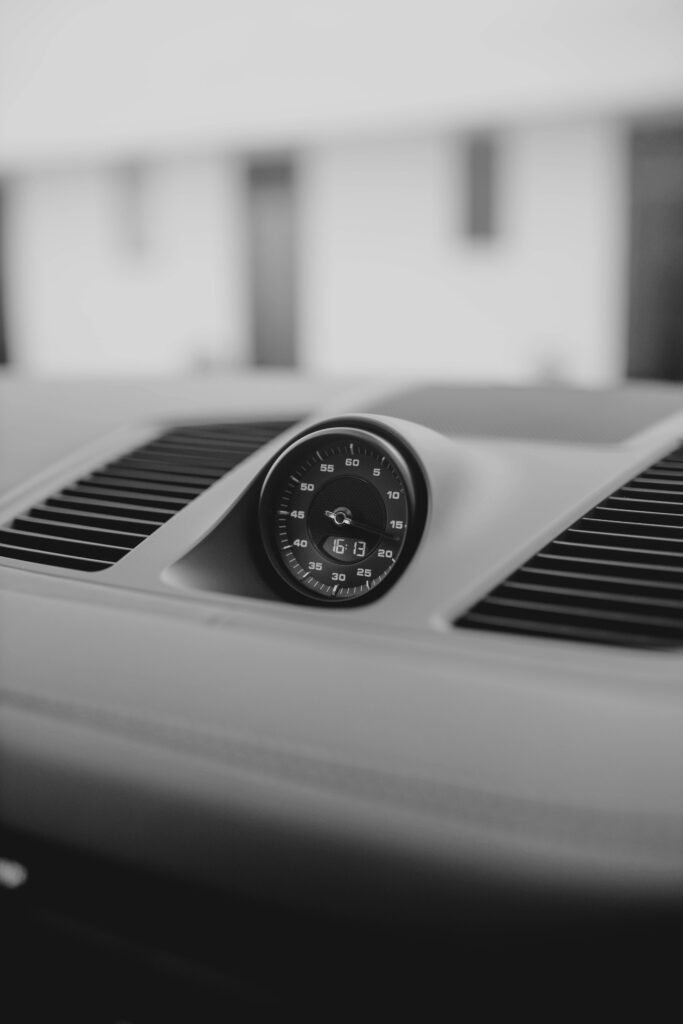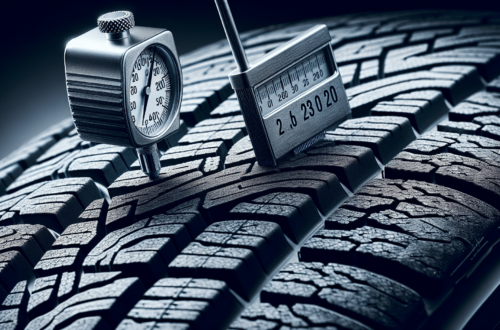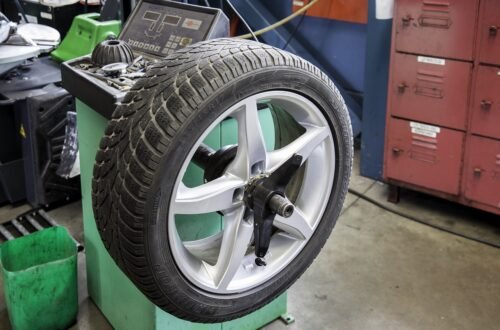When it comes to staying safe on the road during the summer, your tires play a crucial role. As the temperatures rise, the condition of your tires becomes even more important for maintaining control and preventing accidents. In this article, we will share some essential summer tire tips that will help keep you and your loved ones safe throughout your summer adventures. From regular inspections to proper tire inflation, these practical tips will ensure that your tires are in top shape and ready to handle whatever the summer roads may bring. Don’t let tire issues put a damper on your summer fun; follow these tips and stay safe on the road!
Proper Tire Maintenance
Proper tire maintenance is essential to ensure your safety on the road and to maximize the lifespan of your tires. By following these simple steps, you can keep your tires in excellent condition and prevent any potential issues.
Regularly Check Tire Pressure
One of the most important aspects of tire maintenance is regularly checking the tire pressure. Proper tire pressure is crucial for optimal performance and safety. Underinflated tires can lead to poor handling, decreased fuel efficiency, and increased risk of tire damage. On the other hand, overinflated tires can cause a harsher ride and uneven tire wear. It is recommended to check the tire pressure at least once a month or before long trips.
Inspect Tire Tread Depth
The tread depth of your tires plays a significant role in maintaining traction on the road, especially in wet conditions. To check the tread depth, you can use a tread depth gauge or the old penny test. Place a penny upside down into the tread grooves, and if you can see the top of Lincoln’s head, it’s time to replace your tires. Adequate tread depth ensures proper grip and reduces the risk of hydroplaning.
Rotate Tires Regularly
Rotating your tires regularly helps distribute the wear more evenly and extends their lifespan. Front tires tend to wear differently than rear tires due to the weight distribution of the vehicle. Rotating the tires from front to back and side to side ensures even wear and promotes better handling. Check your vehicle’s owner’s manual for recommended rotation intervals and patterns.
Ensure Proper Wheel Alignment
Proper wheel alignment is crucial for even tire wear and optimal vehicle performance. Misaligned wheels can cause irregular tire wear, premature tire damage, and affect the vehicle’s handling and fuel efficiency. It is advisable to have your wheel alignment checked by a professional if you notice any signs of uneven tire wear or if you have hit a pothole or curb.
Check for Tire Damage
Regularly inspect your tires for any signs of damage, such as cuts, bulges, or punctures. These issues can compromise the tire’s integrity and lead to a blowout or loss of control while driving. If you notice any damage, it is important to address it promptly by either repairing or replacing the tire. Remember to also check the valve stems and ensure they are intact and in good condition.
Choose the Right Tires
Selecting the right tires for your vehicle is crucial for optimal performance and safety, especially during summer conditions. Here are some factors to consider when choosing the right tires:
Select Tires Suitable for Summer Conditions
Summer conditions can bring high temperatures and dry road surfaces, requiring tires that can handle these conditions effectively. Look for tires specifically designed for summer use, as they are formulated with compounds that provide better grip on hot asphalt and improved handling in warm weather.
Consider Performance Tires
If you enjoy spirited driving or have a high-performance vehicle, consider performance tires. These tires are designed to provide enhanced handling, cornering stability, and short braking distances. However, keep in mind that performance tires may not offer the same level of comfort and longevity as standard tires.
Check the Tire Size and Load Rating
Ensure that the tires you choose are the correct size and load rating for your vehicle. Using the wrong tire size or load rating can lead to compromised handling and reduced safety. Refer to your vehicle’s owner’s manual or consult a tire expert to determine the correct tire specifications.
Opt for All-Season or Summer Tires
All-season tires are a popular choice for their versatility, as they can perform well in a variety of weather conditions. If you live in an area with mild summers, all-season tires may be a suitable option. However, if you experience hot summers, consider opting for summer tires specifically designed for high temperatures.
Consider Tires with Good Wet Traction
Summer showers can create wet road conditions, so it’s important to choose tires with good wet traction. Look for tires with specialized tread patterns and compounds that effectively channel water away from the tire’s contact patch, reducing the risk of hydroplaning and improving overall grip in rainy conditions.

This image is property of images.pexels.com.
Check for Wear and Tear
Regularly checking your tires for signs of wear and tear is essential for maintaining your safety on the road. Look out for the following indicators:
Inspect for Signs of Wear
Check for uneven wear patterns on the tire tread, such as excessive wear on the inner or outer edges. Uneven wear can be an indication of misalignment, insufficient tread depth, or improper inflation. If you notice any irregularities, it’s best to have a professional inspect your tires.
Check Tire Age
Tire age can also affect their performance and safety. Even if there is sufficient tread depth, tires older than six years should be carefully inspected for signs of aging, such as cracks or dry rot. If your tires are showing signs of aging, it is recommended to have them replaced, regardless of the remaining tread depth.
Look for Cracks or Bulges
Inspect the sidewalls of your tires for any cracks or bulges. Cracks can indicate aging, while bulges suggest internal damage. Both issues can lead to a tire blowout and should be addressed immediately by replacing the tire.
Evaluate Sidewall Condition
A damaged sidewall can compromise the structural integrity of the tire and increase the risk of a blowout. Look for any cuts, gouges, or punctures on the sidewall. If you notice any damage, it’s best to have the tire repaired or replaced to ensure your safety on the road.
Examine Tires for Uneven Wear
Uneven wear can indicate improper tire rotation, misalignment, or other issues. Use a tread depth gauge or visually inspect the tread to identify any areas of uneven wear. Having your tires regularly rotated and ensuring proper wheel alignment can help prevent uneven wear and prolong tire life.
Maintain Proper Tire Pressure
Proper tire pressure is essential for optimal performance, fuel efficiency, and safety. Here are some tips on maintaining the correct tire pressure:
Understand Optimal Air Pressure
Refer to your vehicle’s owner’s manual or the sticker located on the driver’s side door jamb to find the recommended tire pressure. It is important to understand the difference between the maximum pressure indicated on the tire sidewall and the recommended pressure specified by the manufacturer.
Check Tire Pressure Regularly
Make it a habit to check your tire pressure at least once a month and before long trips. Use a reliable tire pressure gauge to measure the pressure when the tires are cold, as hot tires can give inaccurate readings. Check the pressure in all four tires, including the spare if applicable.
Inflate Tires According to Manufacturer’s Guidelines
When inflating your tires, use an air compressor or a service station with a reliable air pump. Inflate the tires according to the manufacturer’s guidelines and ensure that all tires are inflated to the recommended pressure. Avoid overinflating or underinflating, as both can negatively impact tire performance and safety.
Avoid Overinflating or Underinflating
Overinflated tires can lead to a harsher ride, reduced traction, and increased risk of tire damage. On the other hand, underinflated tires can cause poor handling, decreased fuel efficiency, and increased tire wear. Maintaining proper tire pressure is essential for your safety and the longevity of your tires.
Consider Using a Tire Pressure Monitoring System
A tire pressure monitoring system (TPMS) can be a valuable tool in ensuring that your tires are properly inflated. TPMS sensors continuously monitor the tire pressure and provide real-time feedback. Some newer vehicles come equipped with TPMS as a standard feature, while aftermarket systems are also available for older vehicles.

This image is property of images.pexels.com.
Drive Responsibly
Your driving behavior plays a significant role in the overall health and longevity of your tires. Here are some tips to help you drive responsibly and minimize tire wear:
Adhere to Speed Limits
Driving at excessive speeds can generate excessive heat in the tires, leading to increased wear and decreased tire life. Adhere to posted speed limits and adjust your speed based on road conditions and weather.
Avoid Hard Braking and Sudden Acceleration
Abrupt braking and rapid acceleration can cause unnecessary stress on the tires, resulting in accelerated wear. Gradually apply the brakes and smoothly accelerate to help maintain tire health and extend their lifespan.
Steer Clear of Potholes and Obstacles
Hitting potholes and other road obstacles can cause tire damage, including sidewall cuts, bulges, or even wheel misalignment. Whenever possible, avoid road hazards or slow down when approaching them to minimize the risk of tire damage.
Maintain a Safe Following Distance
Maintaining a safe distance from the vehicle ahead allows for better reaction time and minimizes the need for sudden braking. By avoiding abrupt stops, you reduce the strain on your tires and decrease the risk of premature wear.
Avoid Overloading the Vehicle
Excessive weight can put unnecessary stress on your tires, leading to increased wear and compromised safety. Always adhere to the recommended load capacity specified by the vehicle manufacturer, and avoid overloading your vehicle with heavy cargo.
Be Mindful of Tire Heat
Heat can have a significant impact on tire performance and safety, particularly in hot weather conditions. Follow these tips to minimize the effects of heat on your tires:
Avoid Driving with Underinflated Tires in Hot Weather
Underinflated tires generate more heat due to increased rolling resistance. In hot weather, this can lead to a dangerous combination of excessive heat and potential tire failure. Regularly check and maintain the proper tire pressure to reduce the risk of tire-related incidents.
Do Not Overload the Vehicle in Hot Conditions
Excessive weight combined with high temperatures can put additional stress on your tires and lead to increased heat buildup. Avoid overloading your vehicle, especially during the summer months, to maintain the optimal performance and safety of your tires.
Allow Tires to Cool Down
After a long drive or in extremely hot weather, give your tires time to cool down before inspecting or adjusting the tire pressure. Hot tires can give inaccurate pressure readings, and handling or inflating them immediately could lead to unwanted issues.
Park in Shaded Areas if Possible
Whenever possible, park your vehicle in shaded areas to minimize direct exposure to the sun’s heat. Extended exposure to high temperatures can accelerate tire aging and increase the risk of potential tire damage.

This image is property of images.pexels.com.
Handle Wet Road Conditions
Driving in rainy conditions requires additional caution and attention. Here are some tips to help you navigate wet roads safely:
Adjust Driving Behavior in Rainy Conditions
Rainy conditions affect the road surface, reducing traction and increasing stopping distances. Reduce your speed and adjust your driving behavior accordingly to ensure proper control of your vehicle.
Reduce Speed and Increase Following Distance
Slowing down and increasing the gap between your vehicle and the one ahead allows for better response time and minimizes the risk of hydroplaning. Giving yourself enough time to react can help prevent accidents and keep you safe on wet roads.
Avoid Sudden Maneuvers
Abrupt turns, lane changes, or sudden acceleration or braking can be particularly dangerous on wet roads. Maintain a smooth and steady driving style to minimize the risk of skidding or losing control.
Ensure Proper Tread Depth for Wet Roads
Adequate tread depth is crucial for maintaining grip on wet roads. As the tires wear down, the ability to channel away water diminishes, increasing the risk of hydroplaning. Regularly check the tread depth and replace worn tires with low tread depth to ensure optimal performance in wet conditions.
Replace Worn Tires with Low Tread Depth
As tires near the end of their lifespan, the tread depth decreases, compromising their performance on wet roads. It is important to replace tires with low tread depth to ensure the necessary traction and handling in rainy conditions.
Store Tires Properly
Properly storing your tires during periods of non-use can help preserve their condition and prolong their lifespan. Follow these guidelines for proper tire storage:
Remove and Store Summer Tires in Winter
If you have separate summer and winter tires, it is advisable to remove and store the summer tires during the winter months. This prevents unnecessary wear and tear from exposure to harsh winter conditions, such as freezing temperatures and road salt.
Clean Tires Before Storage
Before storing your tires, give them a thorough cleaning to remove any debris, dirt, or brake dust. Use a mild detergent, a soft brush, and clean water to gently scrub the tires. Ensure they are completely dry before storing to prevent the growth of mold or mildew.
Store Tires in a Cool, Dry, and Dark Place
Choose a storage location that is cool, dry, and away from direct sunlight. Excessive heat, moisture, and UV rays can accelerate the aging process and compromise the integrity of the tires. Consider using tire storage racks or stack them horizontally to prevent deformation.
Protect Tires from Direct Sunlight and Moisture
Direct sunlight and moisture can degrade the tires and affect their performance over time. When storing your tires, use tire covers or alternative protective coverings to shield them from UV rays and keep them in a dry environment.
Consider Using Tire Storage Bags or Racks
Tire storage bags or racks can provide an additional layer of protection and organization when storing your tires. These products are designed to protect the tires from moisture, dust, and other contaminants, ensuring they remain in optimal condition for future use.
Emergency Preparedness
In case of unexpected situations or emergencies on the road, it is essential to be prepared. Here are some tips to help you stay prepared and minimize the impact of tire-related incidents:
Carry a Spare Tire and Necessary Tools
Always have a spare tire in your vehicle, along with the necessary tools to change a flat tire. A spare tire, lug wrench, and jack are essential items that should be in your vehicle at all times.
Learn How to Change a Flat Tire
Knowing how to change a flat tire is a valuable skill that every driver should learn. Familiarize yourself with the process by reading your vehicle’s owner’s manual or watching tutorials online. Remember to practice changing a tire in a safe and controlled environment before attempting it on the roadside.
Have a Roadside Assistance Plan
Consider having a roadside assistance plan in place, such as through an automobile club or your vehicle’s manufacturer. These services can provide assistance in case of a flat tire, breakdown, or other roadside emergencies.
Keep Emergency Supplies in the Car
Being prepared for emergencies goes beyond tire-related incidents. Keep a basic emergency kit in your vehicle that includes items such as a flashlight, spare batteries, first aid supplies, reflective warning triangles, and a portable phone charger.
Know Your Tire Warranty and Insurance Coverage
Familiarize yourself with the terms and conditions of your tire warranty, as well as your insurance coverage. Understanding what is covered and what is not can save you time and money in the event of tire damage or other related issues.
Consult with a Professional
When in doubt or if you have specific concerns about your tires, it is always advisable to consult with a tire expert or a mechanic. These professionals have the knowledge and expertise to address any questions or issues you may have regarding tire maintenance, selection, or performance upgrades.
Seek Advice from a Tire Expert
Visit a tire specialist or a tire retailer to seek advice and recommendations on the best tires for your specific vehicle and driving needs. They can assess your requirements, answer any questions you may have, and guide you in making an informed decision.
Get a Professional Tire Inspection
Consider scheduling a professional tire inspection at regular intervals or if you notice any unusual symptoms or issues. A tire expert can assess the condition of your tires, identify potential problems, and offer suggestions for improvement or necessary repairs.
Consider Consulting a Mechanic
If you have concerns about your vehicle’s overall performance or suspect any mechanical issues that may be affecting your tires, it’s best to consult a qualified mechanic who specializes in tire-related matters. They can diagnose and address any underlying problems that may be impacting your tire performance.
Ask for Recommendations on Tire Brands
Tire experts and mechanics often have experience and knowledge about various tire brands and their performance characteristics. Don’t hesitate to ask for their recommendations based on your specific driving needs, budget, and expectations.
Get Expert Opinion on Tire Upgrades
If you are considering upgrading your tires for better performance or specific driving conditions, consulting with an expert can help you make an informed decision. They can recommend suitable options based on your driving preferences, whether it’s enhanced handling, improved traction, or other specific requirements.
By following these comprehensive summer tire maintenance tips, you can stay safe on the road, extend the lifespan of your tires, and ensure optimal performance in different driving conditions. Remember to prioritize regular inspections, proper inflation, and responsible driving habits to maximize your safety and driving experience.





